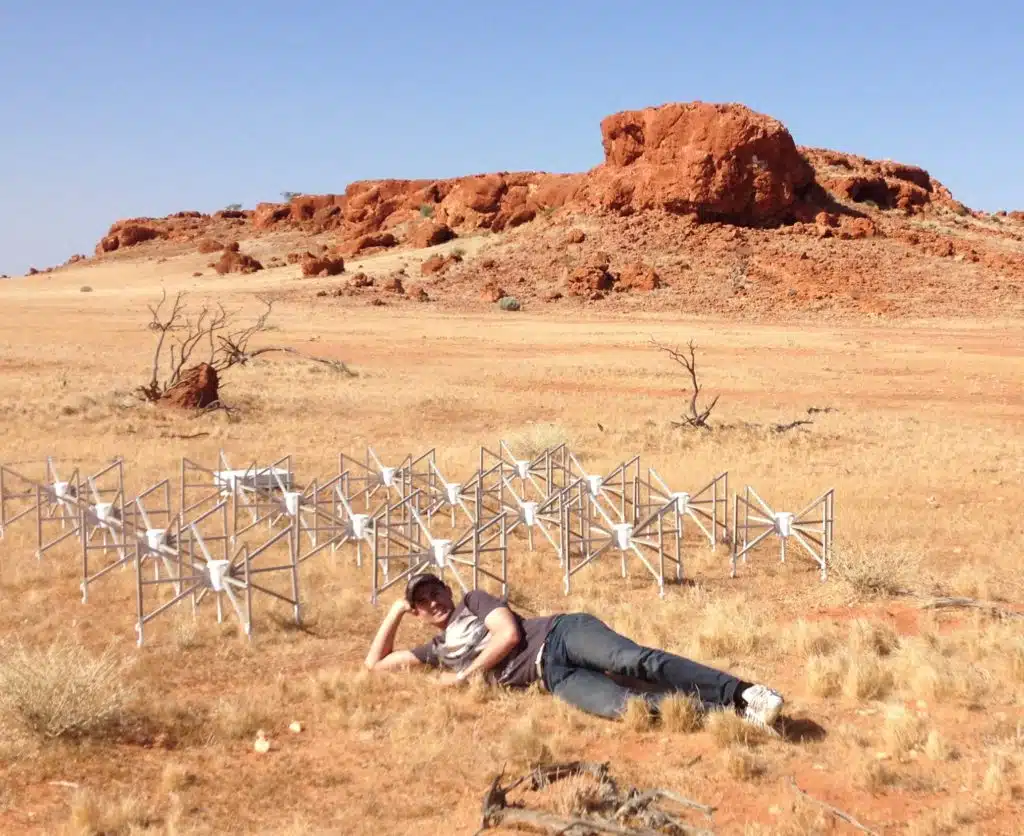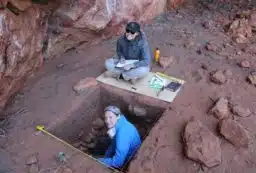The moon may be the key to unlocking the secrets of the early Universe.
In a project led by Dr Benjamin McKinley at Curtin University, astronomers are observing the moon with a radio telescope, in search of the faint signal from hydrogen atoms in the infant Universe.
“Before there were stars and galaxies, the Universe was pretty much just hydrogen, floating around in space and emitting radio waves. If we can detect this radio signal it will tell us whether our theories about the evolution of the Universe are correct or not,” Ben says.
“The key is being able to measure the average brightness of the sky with extremely high precision.
“In your car radio you can tune into various channels and the radio waves are converted into sounds. Our radio telescope, the Murshison Widefield Array, takes the same radio channels and converts the information into images of the sky.”
The moon serves as a reference point of known brightness and shape, which has allowed the team to measure the brightness the Milky Way.
With more observations, they hope to uncover the hydrogen signal and put theoretical models of the Universe to the test.
Image: Ben and team are using this radio telescope to observe the moon in their search for radio signals from the early Universe. Credit: Curtin University





 Fresh Science is on hold for 2022. We will be back in 2023.
Fresh Science is on hold for 2022. We will be back in 2023.